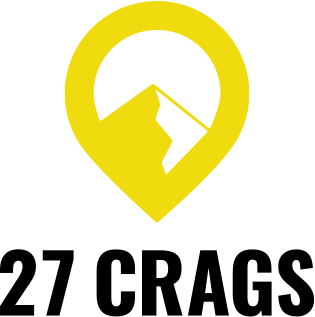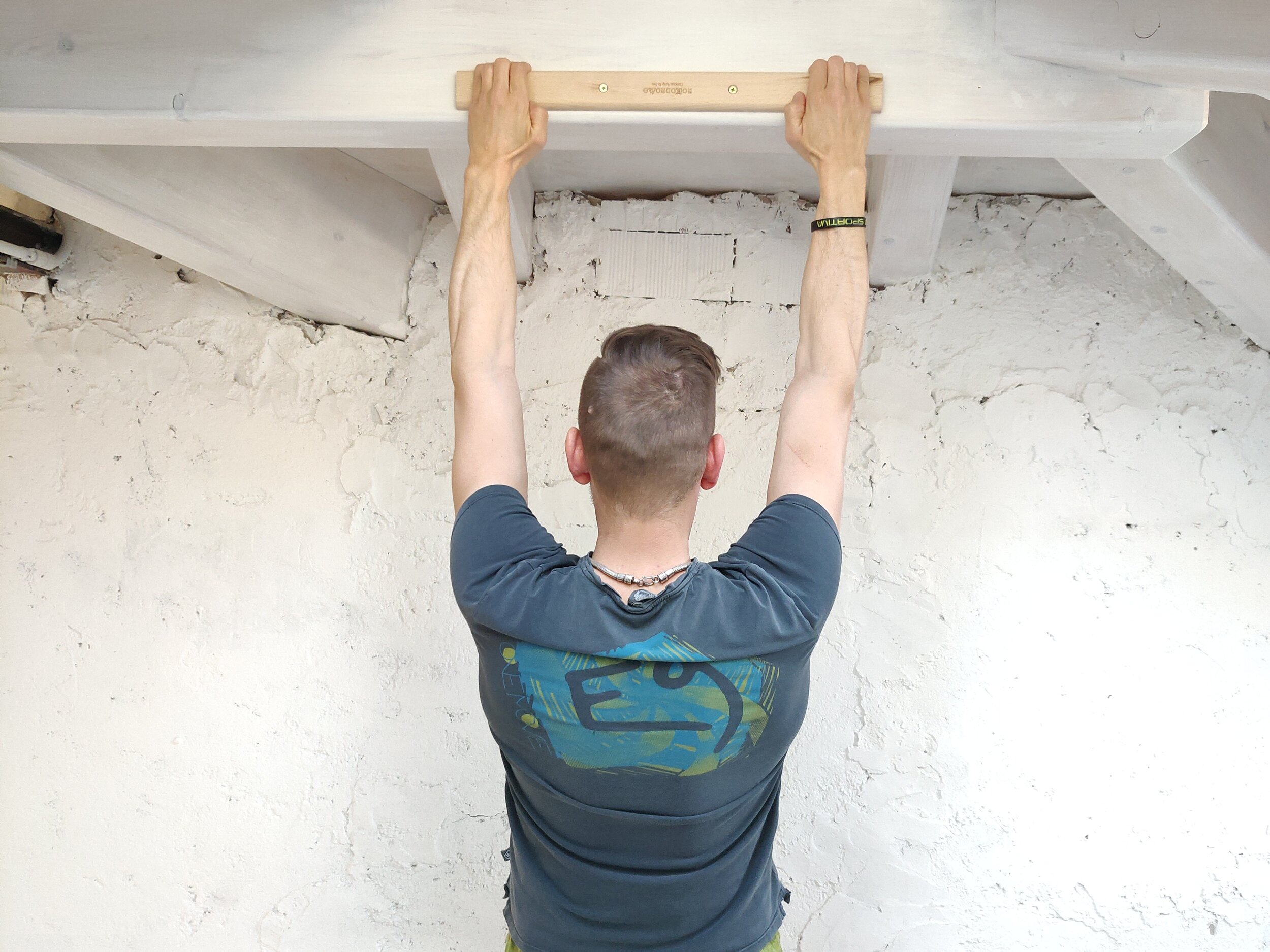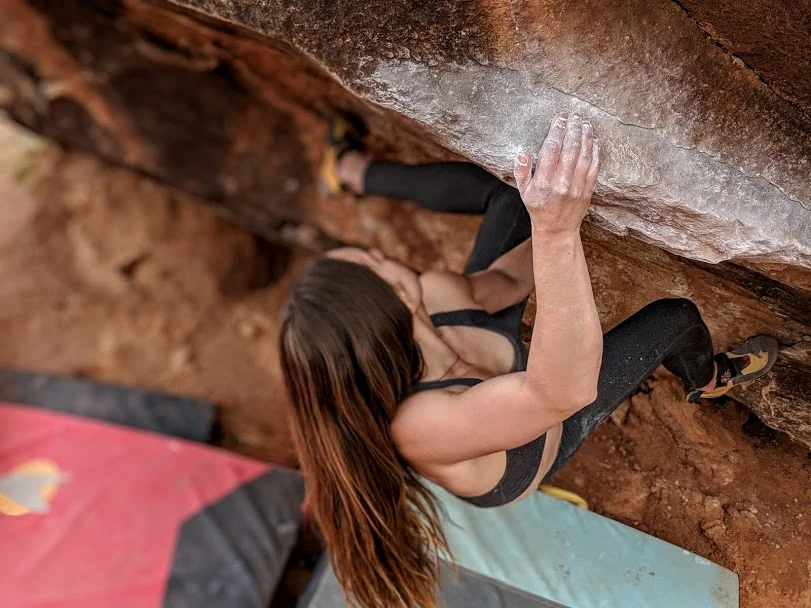Simple Tests to Assess Your Physical Level in Climbing - At Home!
Currently climbers all over the world are dealing with quarantine and the fact that they are neither able to train in their climbing gym or going to their favourite crags. Let's use the time spent at home well, and learn how to train properly. Training at home is easier than we imagine, we just need a hangboard or a bar and a bit of free space on the ground.
Before starting to make a training program you should assess your general and specific skills. With this article you’ll get some simple tools to improve your self-training skills. I’ll show you some tests with which you can start building your personalised training program. These tests cover 3 different areas: endurance, strength and general physical skills.
The results will help you build a training program yourself. The results are also needed for a future benchmark to see the improvements. Each score of the 3 categories will help you adapt a general program to your personal style (long route, short and explosive route, bouldering) and find the perfect combination.
Here’s the basic structure for building and adapting your training:
TEST IT
DEVELOP YOUR PROGRAM
TRY IT
RETRY AND ADAPT YOUR PROGRAM DAY BY DAY
According to scientific literature, individualised and daily adapted programs are the best way to improve your skills. It’s important not to rely on a fixed program and to alter it based on the multiple factors affecting training, (stress, nutrition, rest, muscle soreness...). It seems to be extremely important to recalibrate and adapt. This should be your mantra: train – adapt – train – adapt -...
A few comments before jumping to the tests. Firstly, it’s important that you are well rested! You shouldn’t train for 48 hours before the test. It’s also very important to do an appropriate warmup before any test.
You have to do a general and a specific warmup. As a general warmup we can consider a 15 minutes standardised routine, that includes mobilisation of the upper and lower limbs and the trunk. After that we have to do a specific 10 minutes warmup for the muscles involved in the test (forearm, flexor of the arm and finger’s flexor…).
ENDURANCE TEST
Uncorrect pull-up where shoulders are not activated.
First, we look at two specific tests that are the most suitable for development of endurance in the upper limb and in the finger’s flexor:
Maximum number of pull-ups on a bar or big holds
Isometric hang on 30/20mm edge
Correct pull-up with activated shoulders.
The first test is an Exhaustion Test (like a TTF-Training To Failure) modality without time. The goal is to perform the maximum number of pull-ups at the bar without any rest. The test is considered finished when you can no longer get your chin over the bar. This test assesses the upper body endurance.
When performed correctly, core muscles are also in use in the test. If you can’t do at least 5 pull-ups, it’s better to perform the test with an elastic band or pulley to unload weight.
Score: Number of pullups.
Half crimp.
The second test assesses the endurance of finger flexors. You need a 40mm or 30mm edge (beginner-intermediate level) or a 20mm edge (advanced level).
Full crimp.
This is an eExhaustion Test as well. The goal is to see how many seconds you can hang before dropping. It can be considered a good result if you’re able to hang at least 30s on one of the three edges, depending on the level you have.
Important: use a Half Crimp position for the test, not Full Crimp or Open Crimp.
Open crimp.
If you can’t hang at least 20s on a 40mm edge, it’s better to unload your weight or to perform the test on two big holds.
Score: Time to hang in seconds
STRENGTH TEST
Next up there’s two tests which determine the maximal strength level. Maximal strength means that you’re able to perform only one single hard movement without repetition (1RM – Repetition Maximum at the bar), or that you’re able to stay for a short time in a position with a maximum load (Hang Max 5”).
Before explaining these tests specifically, it's important to mention “The Rate of Force Development” (RFD), which is the ability to perform strength as fast as possible. Due to research, this seems to be a very important determinant in sports performance, even more than the maximum strength.
The first test, 1RM at the bar, is performed on the bar or on two big holds on your hangboard. The goal is to find that added-weight level, which allows you to do one single pullup but not a single more. To do this we need to add weights, like bodybuilder weights or kettlebells, to your harness. You’re allowed to do maximum 5 attempts and you have to rest 5-7 minutes between the attempts.
Score: Total Load=bodyweight+added load for 1RM and Ratio=TL (total load)/BW (bodyweight)
Example: BW60kg+added load 25kg=85kg TL RATIO=85/60=1,41
The second test, HANG MAX 5”, is recommended for those who have an intermediate-advanced level (for example if you were able to do the Endurance test with more than 30 seconds on the 20mm edge). Use a 15mm (if needed, 20mm) edge of your hangboard with half-crimp grip and calculate the maximum added weight which you’a able to hold for 5 seconds.
Start with a load that allows you to hang for 15-20 seconds max, and after 5 minutes of rest, add 5 to 10kg. You have a maximum of 5 attempts with 5-7 minutes of rest between the attempts and you have to hang for 5".
Score: Load added in kg and Ratio=TL/BW
GENERAL PHYSICAL TEST
The last test assesses your general physical abilities, they are used in many sports as basic benchmarks. Basically, they show us how skilled and physically ready we are to be considered "athletes". They are just a few movements that can also become routine exercises to improve skills useful to climbing.
25 Single Squats
Planks 40/20/40
Side Planks 40/20/40
Static Sit Up 40/20/40
Reverse Crunch at the Bar
Single Upper Arm reverse crunch at the bar (ONLY for advanced level)
CkcUet – bfqClosed kinetic chain Upper extremity test
The first test involves 25 single leg squats without rest, left and right. We can easily perform it by getting up and sitting down on a chair or a sofa. This test is used to evaluate the strength of the lower limbs, especially of the quadriceps and gluteus muscles.
Goal: to complete the 25 repetition for each leg, no difference >10% between the legs
The second, third and fourth tests are performed the same way and they are used to assess the different abilities of abdominal core muscles and lower limbs muscles.
Static sit up with straight legs.
The goal is to maintain a static position for 40s, rest 20s and keep the same position again for 40s. We evaluate three positions, the prone plank, the left and right side plank, and the static sit up with straight legs.
Goal: to complete each test in the set time
The next two tests are performed at the bar with two arm or a single arm grip. Starting from a straight position, you have to get your feet to touch your hands and get back down.
Perform this without rest and consider the test finished when you’re no longer able to lift the feet up to the hands or when (most likely in the single arm – advanced level) we get off the bar.
We perform this test in addition to assessing the dynamic abilities of the core muscles, but we will also use the muscles of the upper limbs in a more functional activity to climbing than in previous static tests.
Score: number of repetitions
The last test, CkcUet Test, is a standardized performance test and an easy method to measure your strength, power, endurance and stability of the upper extremities. You use a push-up or a modified (knee touching the ground) push-up position and alternately tapping a pre-determined distance (90cm or 3ft) lateral to the stabilizing hand as many times as possible within 15 seconds. You have to perform these three times and calculate the average.
You can normalise your score by the following formula:
Score = Average number of touches/Height (meter, ex 170 cm=1,7) – normalized M 23
Ok, that was the last assessment test! All values will be used as benchmarks to plan your personalised training program, based on your individual skills.
Remember that these values can change every day and even within a single day. So no need to worry if the results vary between the days. This is precisely why you need to learn how to continuously adapt your programs (volume, intensity, frequency and rest).
I will explain the different steps of building your personal workout program in the next article! Meanwhile you can contact me for any further questions.
Psst… When it’s ok to climb outside again, you can find all the needed information by clicking the button below! 👇











